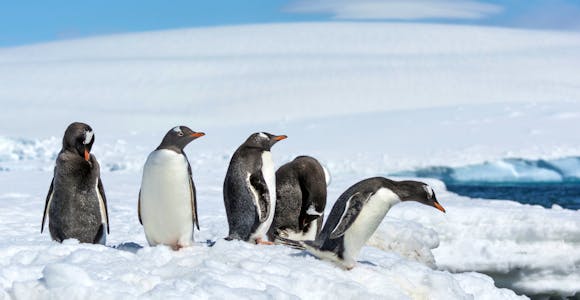
Antarctic Wildlife
Antarctica abounds in penguins, seals and whales, making it one of the most rewarding wildlife watching places on earth.
Discover More
For any Antarctic photography trip, when you travel is of paramount importance. The cruise season, which runs from November to March offers several choices: opt for high summer's warmth and busiest wildlife or embrace the extended golden hour sunsets and sunrises of the shoulder months.
For lovers of landscape photography, November is a hard month to beat. The sun still dips below the horizon for the chance of amazing sunsets, and the presence of the winter snow offers an amazing canvas ready to be painted with light. The light in March is equally wonderful, but while the snow is no longer quite so pristine, you'll find yourself in the height of whale watching season. Having spent the summer feeding, they're often curious around zodiacs and kayaks at this time, making for tremendous photos.
Antarctica's famously unpredictable weather may sometimes mean working with the weather for moody atmospheric shots. The high summer stretch from December to mid-February with its long days may bring fewer dramatic lighting opportunities but is conversely the peak time for wildlife photography, with busy penguin colonies and plenty of chicks plus lots of seal and whale sightings.
Is it possible to have both wildlife and light? If you have the time, consider including South Georgia on your itinerary: king penguin chicks are present all year round, while November brings breeding elephant seals and March offers up playful fur seal pups by the thousand.
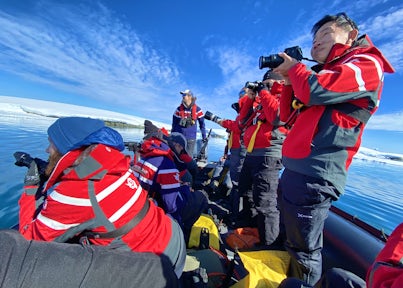
Any Antarctica cruise is going to offer you a spectacular array of wildlife and landscapes to point a camera at, but if you’re serious about your photography then choosing the right ship will go a long way to helping you capture that perfect shot. At Swoop, our inhouse photographer travels south on a shooting trip every year and our sales team knows the entire polar fleet inside – so we have the inside knowledge to help you get the most out of your trip.
One of the most important considerations for your trip is how much time you’ll spend off the ship. Larger ships can mean it takes longer to disembark or that landings can be shorter, so we recommend choosing a smaller ship.
The majority of ships will have a photographer as part of their expedition team who is there to help with advice and guidance. However, many ships also operate dedicated photography-led tours, with extra photography guides and excursions along with technical workshops and talks on board. These can be perfect for really maximising your experience as you’ll be travelling with plenty of fellow enthusiasts all with the same purpose in mind.
If you’re considering a fly-sail cruise and are bringing a lot of kit, be aware that flights to the Antarctic Peninsula have strict baggage limits of 15kg (33lbs) for checked bags and 5kg (11lbs) for carry-on. On some internal Argentinian flights to the cruise starting point at Ushuaia you may also have to pay extra for bags over this weight: our team can advise you of current baggage limits when booking.
Price Match Promise - We’ll match any price you find elsewhere for the same trip

Keen photographers will already have much of their gear to hand, but polar conditions require a few extra considerations when drawing up your packing list. Besides, what better excuse to treat yourself to some new kit than taking a once in a lifetime Antarctica cruise?
Serious photographers should consider bringing two camera bodies with them to avoid continually swapping lenses in often harsh weather. From experience, we recommend bringing a wide-angle lens for landscape photography and a zoom for wildlife close ups. In general you likely won’t need anything over 200mm as you’ll be close to the wildlife, but a longer lens can be handy for long distance shots of whales or albatrosses off the ship.
Bring a waterproof bag or dry pack to protect your camera as you’ll invariably get wet on zodiac trips, as well as making sure your cameras have good straps for when you’re carrying them. Leave your tripod at home though. You won’t miss it; it just gets in the way and you’ll most be shooting at fast speeds because of the light anyway. As for tackling that light, bright snow makes a polarising filter essential and a graduated ND filter highly recommended.
Don’t forget the accessories. Bring plenty of spare batteries and keep them inside your coat so they stay warm in frozen air. You’ll take more photos than you’ll even anticipate so extra memory cards are a must, especially ones that write fast when you’re trying to capture animals on the move. Bring a hard drive or two to back things up: going through the day’s shots on your laptop in the ship lounge is also a great icebreaker for meeting fellow photographers.
Photography in Antarctica trips scored 4.4/5 from 7 reviews
Wildlife photography in Antarctica isn't quite like anywhere else on the planet. This isn’t like tracking game in Africa: animals have no natural fear of humans and can appear in such abundance that you can sometimes be overwhelmed when choosing what to shoot! The environment can bring its own challenges however, depending whether you're on land, in a zodiac or on board the ship, so this is our guide to getting the most out of your camera:

King penguins in an early season sunrise
One thing that makes photography in Antarctica so rewarding is that the wildlife almost comes to you. You'll need to maintain a distance of at least 5m between you and the wildlife but this aside, you'll be wondering more about where to point your camera rather than finding a subject to shoot.
You'll have plenty of time to observe behaviour and pick your shot, whether that’s early season nesting or feeding chicks in high summer. Taking a moment is even more important when you’re in South Georgia, where you can easily imagine yourself in the centre of a David Attenborough documentary such is the overwhelming volume of wildlife.
Although the temptation is often to get out of the zodiac and straight into the action, we always recommend lingering a while on the shore. There’s always plenty to shoot here: penguins are often at their most charismatic when getting out of the water at their cleanest and glossiest, while in South Georgia there is always plenty of action with fur seals and elephant seals.

Gentoo penguins on the Antarctic Peninsula
Shooting from a moving platform like a zodiac can sometimes be a learning experience, but polar guides are highly trained and there to help you get the best shots you can – it's common on trips for some cruises to have dedicated zodiacs just for the hardcore photographers to allow you to concentrate on your craft.
Being low on the water can certainly add drama to your photography, though you’ll need to have your burst mode and a narrow focus aperture ready to capture a group of porpoising penguins. Leopard seals are often more obliging as they may approach your zodiac out of curiosity, as do whales at the end of the season after they’re often quite playful after a summer of gorging on krill.
Ice always makes a great subject when you’re out on the water, whether that’s brash ice with the horizon kept high in the frame, or when you’re looking to capture the perfect iceberg reflection on a sea that’s as flat as a mirror.
Your ship's photography guide should be your best friend while during your trip. They're there to share their Antarctic experience and help you get the most out of your camera, down to the last shot.

Photographic opportunities on your cruise begin the moment your ship leaves port. As soon as you enter the Drake Passage en route to the Antarctic Peninsula you’ll start to attract sea birds that glide effortlessly in your wake. The smaller petrels and prions seem to positively skip across your lens, while albatrosses skim with the grace of a ballet dancer. Either way, they’ll allow you to get in some early practice panning your long zoom lens with your camera in burst mode to capture the action. Don’t worry about framing: these are shots you’ll definitely fix in the edit.
Whales aren’t so commonly seen in the Drake Passage, but especially in high summer and autumn in the Peninsula there are plenty of opportunities to see them from the deck. Your ship will frequently stop to allow you to better observe and photograph them. Guides will help you anticipate their rhythm to time your photography: first the blow, then a dorsal fin breaking the surface and then (if you’re lucky) a set of flukes as they dive.
With wildlife found in large numbers at all times, it's a photographic feast whenever you go. November and March can be popular with photographers as the sun is lower, and the light softer, but the high season months of December through to February can be some of the busiest months for wildlife behaviour and penguin chicks.
Visit our dedicated page about the best time to travel to Antarctica for more detailed information.
Very close is the short answer! The wildlife's densities lack of fear of man means getting close to wildlife isn’t the challenge, it's giving them enough space – zoom lenses are frequently unnecessary. For safe wildlife watching however, it's crucial to keep a minimum of 5m between you and any animals.
The landings are the main focus on these cruises and so plenty of time will be allowed at each place. Each excursion typically lasts for 2- 4 hours, depending on location.
A GoPro can be a great addition to your arsenal if you're planning on shooting video. They're super portable and can really add an extra dimension to what you capture. GoPros really come into their own during activities such as kayaking, allowing you to film the action at water level. Waterline action is just as exciting captured from a zodiac, but you'll need a selfie stick for full reach. Always be sensitive to others when filming with selfie stick however and be careful never to disturb the wildlife with one: the rule about keeping a minimum of 5m from wildlife starts from the position of your camera lens!
It is not permitted to fly recreational drones in Antarctica. This is to prevent disturbing wildlife, noise pollution and accidental pollution by crashed drones that aren't used to flying in subzero conditions where batteries are quickly drained.

Antarctica abounds in penguins, seals and whales, making it one of the most rewarding wildlife watching places on earth.
Discover More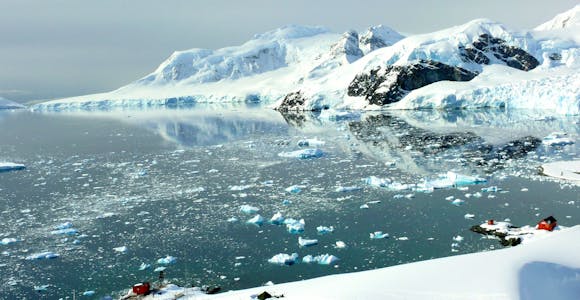
The Peninsula is the classic way to experience Antarctica. Some of the best wildlife and most dramatic scenery can be found in this part of the Frozen Continent.
Discover More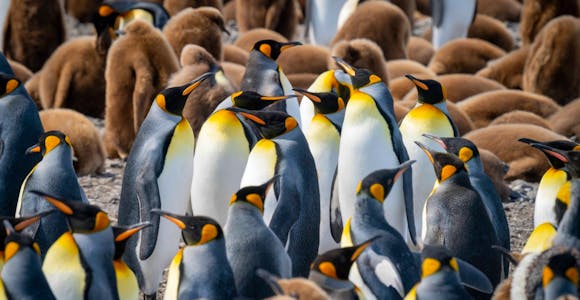
A jewel in Antarctica's crown, South Georgia is one of the world's great wildlife destinations: the Serengeti of the Southern Ocean
Discover More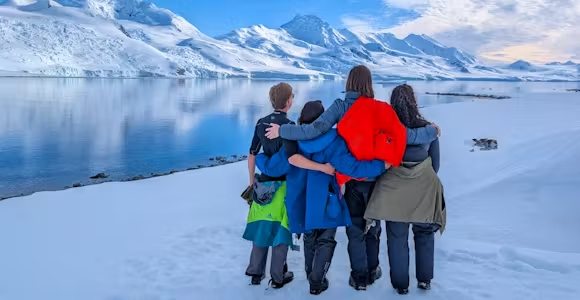
Choosing when to go to Antarctica is a key part of planning a cruise, with each month of the season offering a different side of the continent.
Discover MoreWe'll spend some time listening to your aspirations, then discuss the kind of experience that might suit you.
Next we'll discuss the options, shortlist the best trips for you and present you our impartial recommendations.
We'll place a 24 hour hold on your preferred option - without obligation - whilst we talk through the details.
